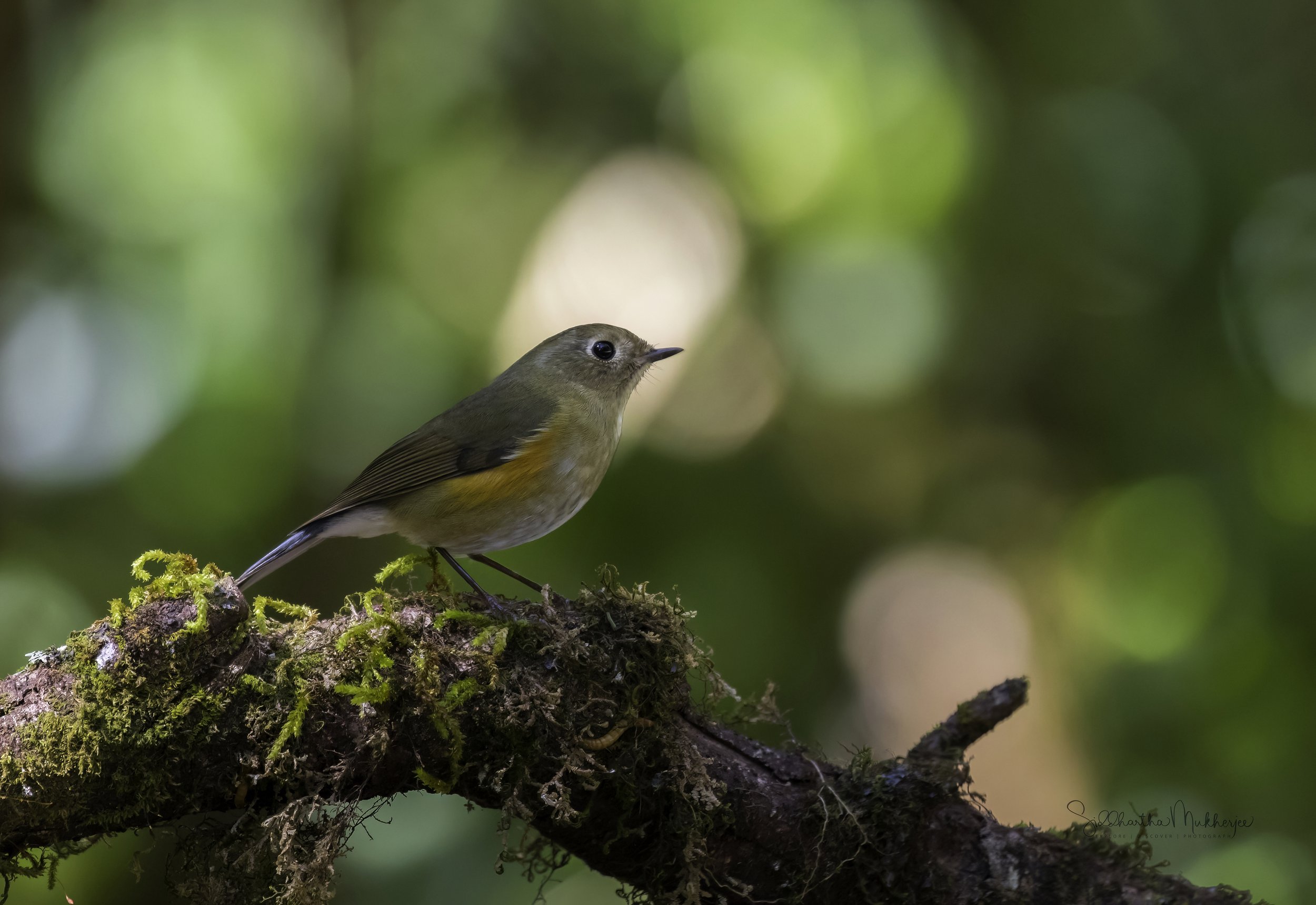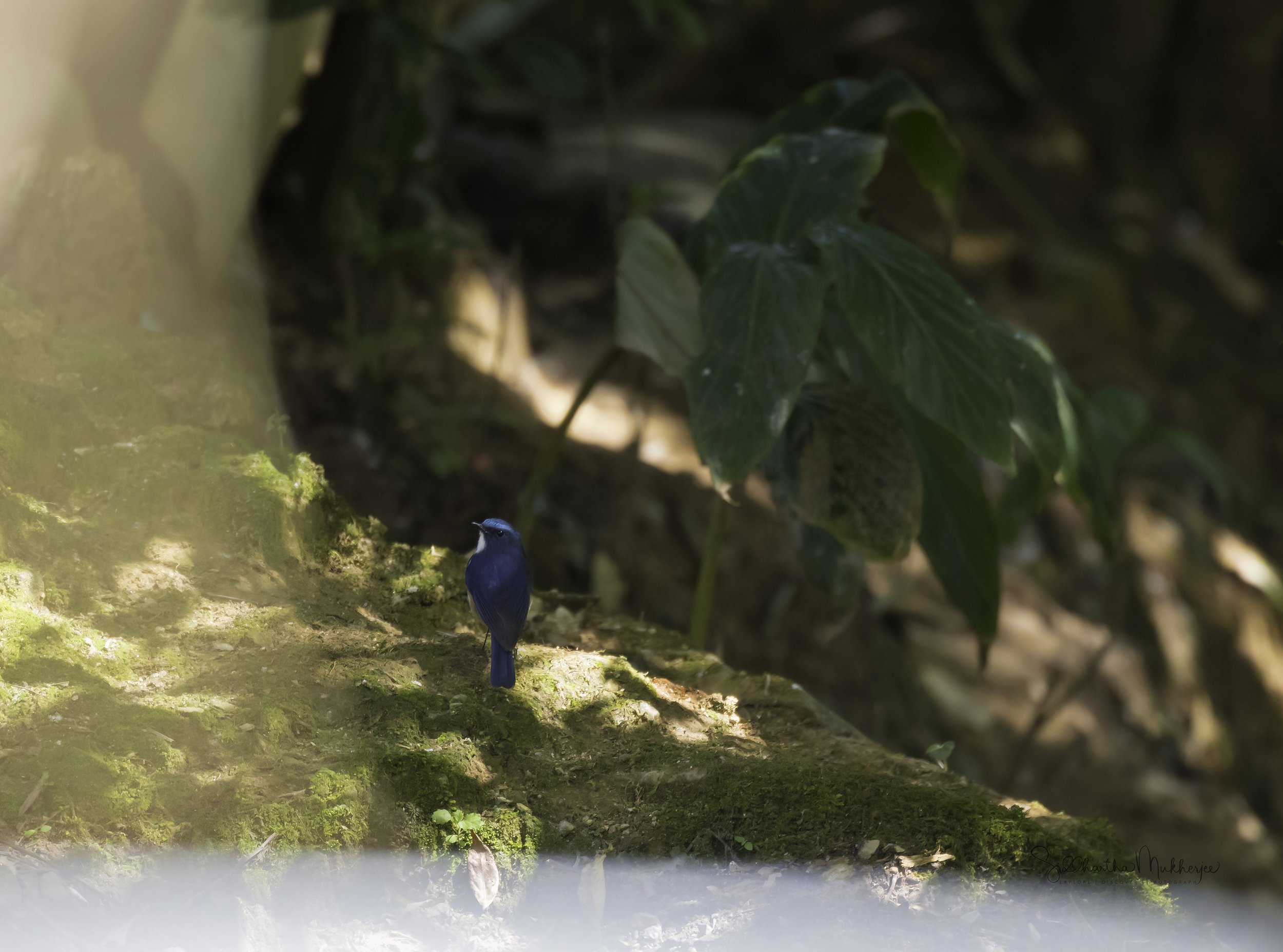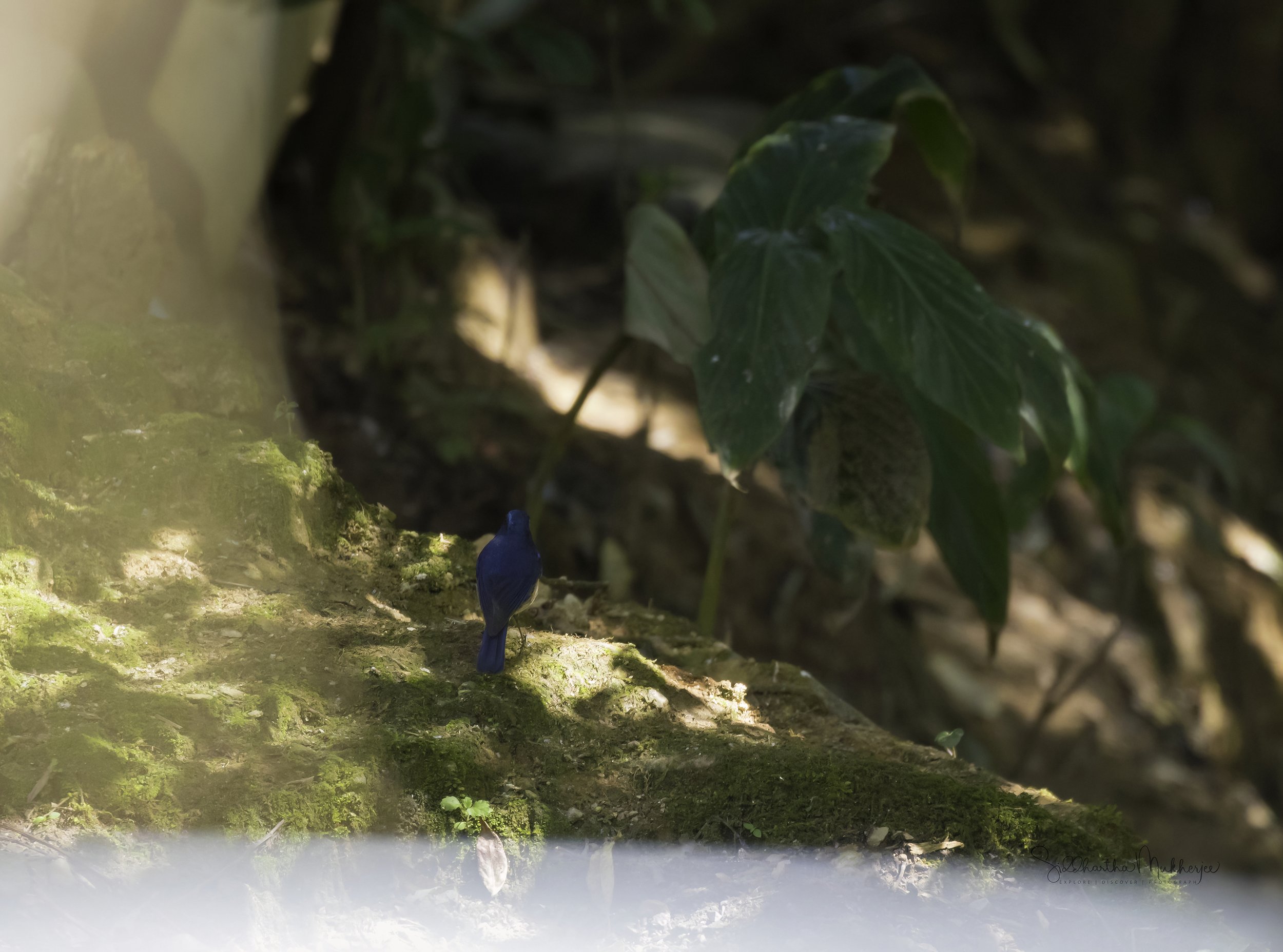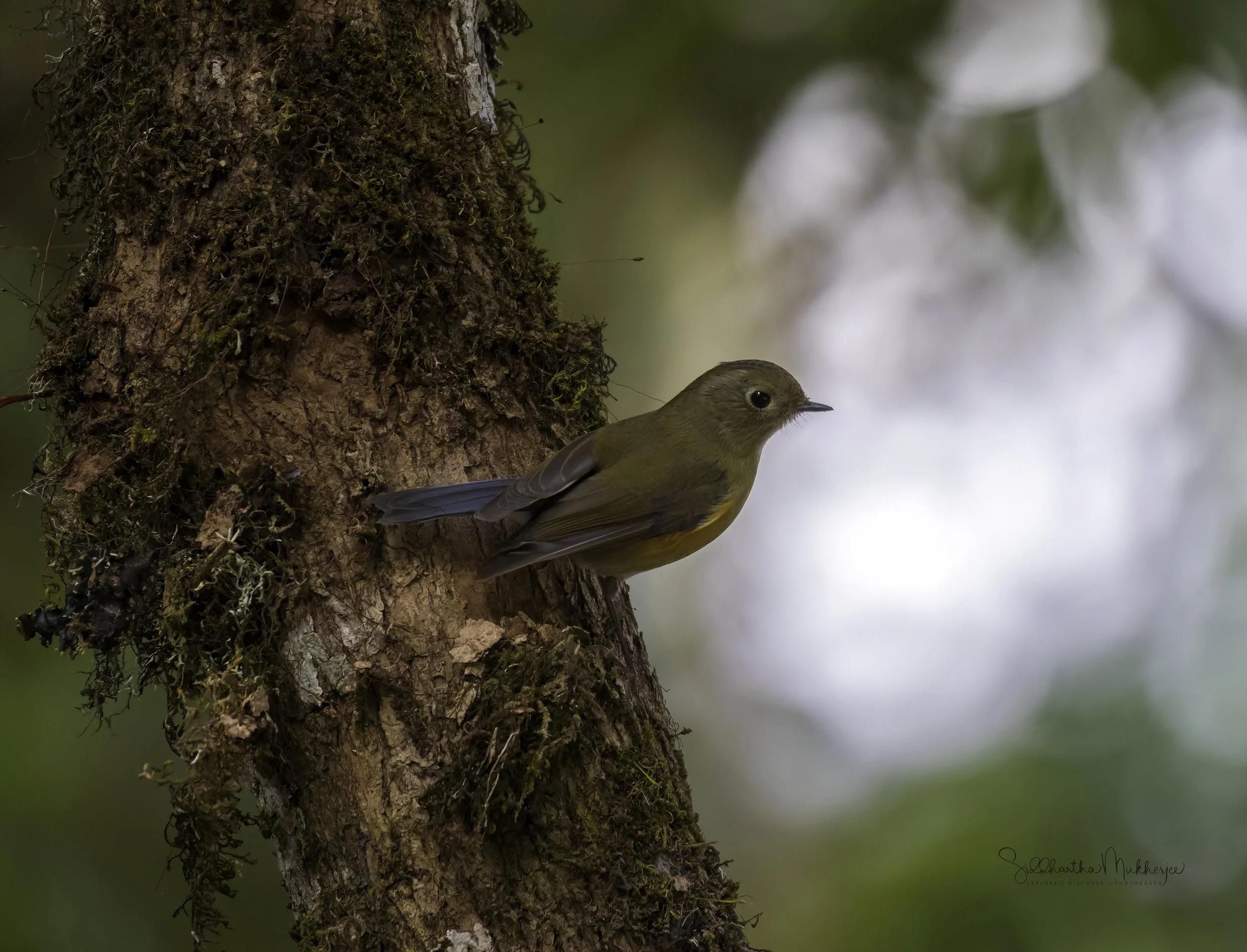Himalayan Bluetail
Tarsiger rufilatus
Chiang Mai, Thailand
It has been a while since I talked about the beautiful birds of Chiang Mai especially some spectacular ones up on Doi AngKhang. The Himalayan Bluetail is one such brightly coloured bird unmistakable in its range. It is a blazing sapphire blue with orange flanks and white throat and belly. The female is brown with a white throat, orange flanks, and pale blue rump and tail. The Himalayan’s song is a simple, repeated “tcher-thcew-wee!” which can be heard in submontane forests where it breeds. It descends in the winter, often moving into edge habitats and can be frequently sighted along forest tracks.
The “Old World” - a fascinating term seemingly like something out of the Lord of the Rings and Jurassic Park put together. But in our case the term "Old World" is used commonly to refer to Asia, Africa and Europe (Afro-Eurasia or the World Island), regarded collectively as the part of the world known to its population before contact with the "New World" (the Americas). In the context of archaeology & world history, the term "Old World" includes those parts of the world which were in (indirect) cultural contact from the Bronze Age onwards, resulting in the parallel development of the early civilisations, mostly in the temperate zone between roughly the 45th and 25th parallels, in the area of the Mediterranean, Mesopotamia, Persian plateau, Indian subcontinent and China. The concept of the three continents in the Old World, viz. Asia, Africa, and Europe, goes back to classical antiquity. Their boundaries as defined by Ptolemy and other geographers of antiquity were drawn along the Nile in what is now Egypt and the Don river in Russia. This definition remained influential throughout the Middle Ages and the Early Modern period.
The Old World Flycatchers are a large family, the Muscicapidae, of small passerine birds mostly restricted to the Old World (Europe, Africa & Asia). These are mainly small arboreal insectivores, many of which, as the name implies, take their prey on the wing. The family includes 324 species & is divided into 51 genera. The name Muscicapa for the family was introduced by the Scottish naturalist John Fleming in 1822. The word had earlier been used for the genus Muscicapa by the French zoologist Mathurin Jacques Brisson in 1760. Muscicapa comes from the Latin musca meaning a fly and capere to catch. The appearance of these birds is very varied, but they mostly have weak songs and harsh calls. They are small to medium birds, ranging from 9 to 22 cm in length. Many species are a dull brown in colour, but the plumage of some can be much brighter, especially in the males. Most have broad, flattened bills suited to catching insects in flight, although the few ground-foraging species typically have finer bills. Old World flycatchers live in almost every environment with a suitable supply of trees, from dense forest to open scrub, & even the montane woodland of the Himalayas. The more northerly species migrate south in winter, ensuring a continuous diet of insects.
The family Muscicapidae contains many subfamilies and each sub family contains many tribes. I wrote about the genus Phoenicurus – Redstarts and the genus Myophonus - Whistling Thrushes in earlier blogs.
Featured here is the Himalayan Bluetail from Doi Angkhang and as is the norm in Thailand I have used a hide to get close. It has been a game of patience and perseverance and if one waits long enough the birds will come.
Himalayan Bluetail - Female
Himalayan Bluetail - Male
But first about where I first saw this bird with its blazing sapphire blue back & orange flanks - the spectacular mountains of Northern Thailand. The Dois of northern Thailand have been very kind to me from a birding perspective. There are so many I have already talked about and so many still remaining. I have written an overview here on the Birds of the Dois and have now started to break them up into individuals like the Gray-backed Shrike, Long-tailed Shrike, Spectacled Barwing, Siberian Rubythroat, the stunning Mrs. Gould’s Sunbird and the numerous other birds I have seen here.
About 685 kilometers to the north of Bangkok lies the former seat of the ancient Lanna Kingdom and is considered one of the most scenic provinces in the country given its mountain ranges, valleys, flora and fauna. A land of misty mountains and colourful hill tribes, a playground for seasoned travellers, and a delight for adventurers. Despite its relatively small size and blissful calm, Chiang Mai truly has it all, a city that is still firmly Thai in its atmosphere and attitude. It is the second-largest changwat (province) of Thailand. Bordered by Chiang Rai to the northeast, Lampang & Lamphun to the south, Tak to the southwest, Mae Hong Son to the west and the Shan State of Myanmar to the north. Located in a verdant valley on the banks of the Ping River, Chiang Mai was founded in 1296 as the capital of the ancient Lanna Kingdom. Today it is a place where past and the present seamlessly merge with modern buildings standing side by side with venerable temples. Of all the places I have visited in Thailand, Chiang Mai with its forests and mountains and the historic city of Ayutthaya are by far my favourites.
The word Chiang itself is from North Thai, or Lanna, meaning town or city and Mai means new making Chiang Mai the New City as it was founded later than Chiang Rai, the earlier capital of King Meng Rai. The districts in the province are called amphoe, and sub-districts are called tambon. Another twist is the use of Nakhon (or Nakorn or Nakhorn), derived from the Sanskrit word Nagara, also means city, though strictly speaking it refers to a capital city such as Nakorn Sri Ayutthaya (more on Ayutthaya later). Indeed to emphasise its former status you may sometimes see Chiang Mai referred to as Nakhon Ping. Other common names of geographical features include mae (river) and doi which is north Thai for mountain - for example Doi Inthanon and Mae Ping.
The four Dois we spent our time on were Doi Inthanon, Doi Ang Khang, Doi Luang and Doi SanJu.
Doi Ankhang is a mountain belonging to the Himalayan foot hill range, located at the Myanmar (Burmese) border. The highest point is 1,928 metres. Although chiefly deforested, this is still one of Northern Thailand’s most prominent bird watching areas, due to more and rarer bird species being in residence, as well as being a popular resting point for numerous migratory birds. Examples of rare and beautiful birds inhabiting this area include the Mountain Bamboo Partridge, Spot-breasted Parrotbill, Tickell’s Leaf Warbler and the Red-faced Liocichla. It is not so uncommon to spot the Red-tailed Laughing Thrush here. Around The Royal Agricultural Project Station you can find Brown, Burmese and Long-tailed Shrike and also Fire-capped Tits and Silver-eared Mesia, White – tailed Robin & Maroon Oriole.
We didn’t have the good fortune to see all the species on all the mountains, that would have been impossible, but we did rack up quite a number of species - about 95 of them.
The beautiful road to the top of Doi Angkhang.
Read about the other birds from these beautiful mountains. These are only a few of the huge number I have spotted and recorded there.
With that said, meet this blazing sapphire blue bird from the mountains of Chiang Mai.
‡‡‡‡‡
Himalayan Bluetail/ Himalayan Red-flanked Bush-robin/ Orange-flanked Bush-robin
The Himalayan bluetail (Tarsiger rufilatus), also called the Himalayan red-flanked bush-robin or orange-flanked bush-robin, is a small passerine bird that was formerly classed as a member of the thrush family Turdidae, but is now more generally considered to be an Old World Flycatcher of Muscicapidae. While currently under review, this taxon is not current recognised as a species by BirdLife international.
It is closely related to the red-flanked bluetail and was generally treated as a subspecies of it in the past, but as well as differing in its migratory behaviour (the red-flanked bluetail is a long-distance migrant), it also differs in the more intense blue colour of the adult males and the greyer colour of the females and juveniles.
The Himalayan bluetail is an insectivorous short-distance altitudinal migrant species, breeding in the Himalayas in the bush layer (dwarf rhododendron in wetter areas, deciduous bushes in drier) of conifer and mixed conifer-oak forest and fir but sometimes in areas with West Himalayan spruce or Bhutan Pine/ Himalayan cypress or Bhutan cypress forest; at 3000–4400 m, not penetrating beyond tree-line and in winters found at 1,500–2,500 m typically in broadleaf evergreen forest, dense dark undergrowth and thickets, clearings, treefall gaps with vine tangles, open woodland; commonly seen along tracks; favours ridges and mountain tops.
There are three species in the same genus:
Tarsiger rufilatus - the Himalayan bluetail
Tarsiger chrysaeus - the Golden bush robin
Tarsiger cyanurus - the Red-flanked bluetail
The Himalayan Bluetail is about 15 cm long and weighs about 11–14 grams. The male is a rich dark blue on its head and upper parts, with a distinctly paler blue supercilium and shoulder patch, and a rich cobalt-blue rump, upper tail-coverts and the outer tail. The chin, throat and underparts are white with the blue of the upper parts extending to the sides of the breast. The breast is rather extensively spotted with grey, and the flanks have the distinctive broad orange patch. The iris is dark brown and the bill and legs are blackish. The female has a whitish eye ring and is a cold grey-brown above with a bright sky-blue rump and tail. The flight feathers are tinged rufous while the chin and throat are white. The breast is a pale buffy grey-brown with orange flanks, and the remaining underparts white. The juvenile is a duller brown with extensive buffish spotting and small streaks, a light blue tail with a trace of orange on the flanks.
It is distributed from North East Afghanistan and North Pakistan East through the Himalayas to North East India (Arunachal Pradesh), North to Central & South China (from East & North Qinghai, South West Gansu and South Shaanxi, South to West & North Yunnan), probably also North Myanmar and North Vietnam (W Tonkin); non-breeding at lower altitudes south of breeding range and North of South East Asia.
Its diet and foraging is little studied. Invertebrates, mainly insects; also fruits and seeds when it is not breeding. In one study in China (apparently summer), 81% of food consisted of caterpillars, bugs, beetles, flies and other insects, the rest spiders, fruit and grass seeds; in another, stomachs held small beetles, ground bugs, flies and (autumn) berries. In Himalayas, recorded as taking caterpillars, ants, wasps and dock (Polygonum) seeds. Craneflies seen caught in flight and fed to nestlings. Forages on ground and in low bushes, often making short flycatcher-like sallies after flying insects.
Breeding season is between May and August. The nest is a cup made of grass, moss, ferns, twigs and roots, lined with hair, feathers, fine grass and sometimes wool, placed in hollow of tree, among tree roots, under rotten log or in hole in bank or steep slope. The clutch is between 3–5 (usually four) eggs, white, usually with few pink speckles at the larger end.
It was a very pleasant morning with a nice breeze and beautiful diffused light. The conditions were perfect for photography and gradually as we settled into our hides a number of birds came out to forage. Almost at the end of our session we were walking around trying to explore the area and the Himalayan came out to play. The female approached and perched close to where I was giving me lovely photos but the male was shy and only came out on the slopes below me and I could only manage a handful of photos before he disappeared.
‡‡‡‡‡
Related Posts

























